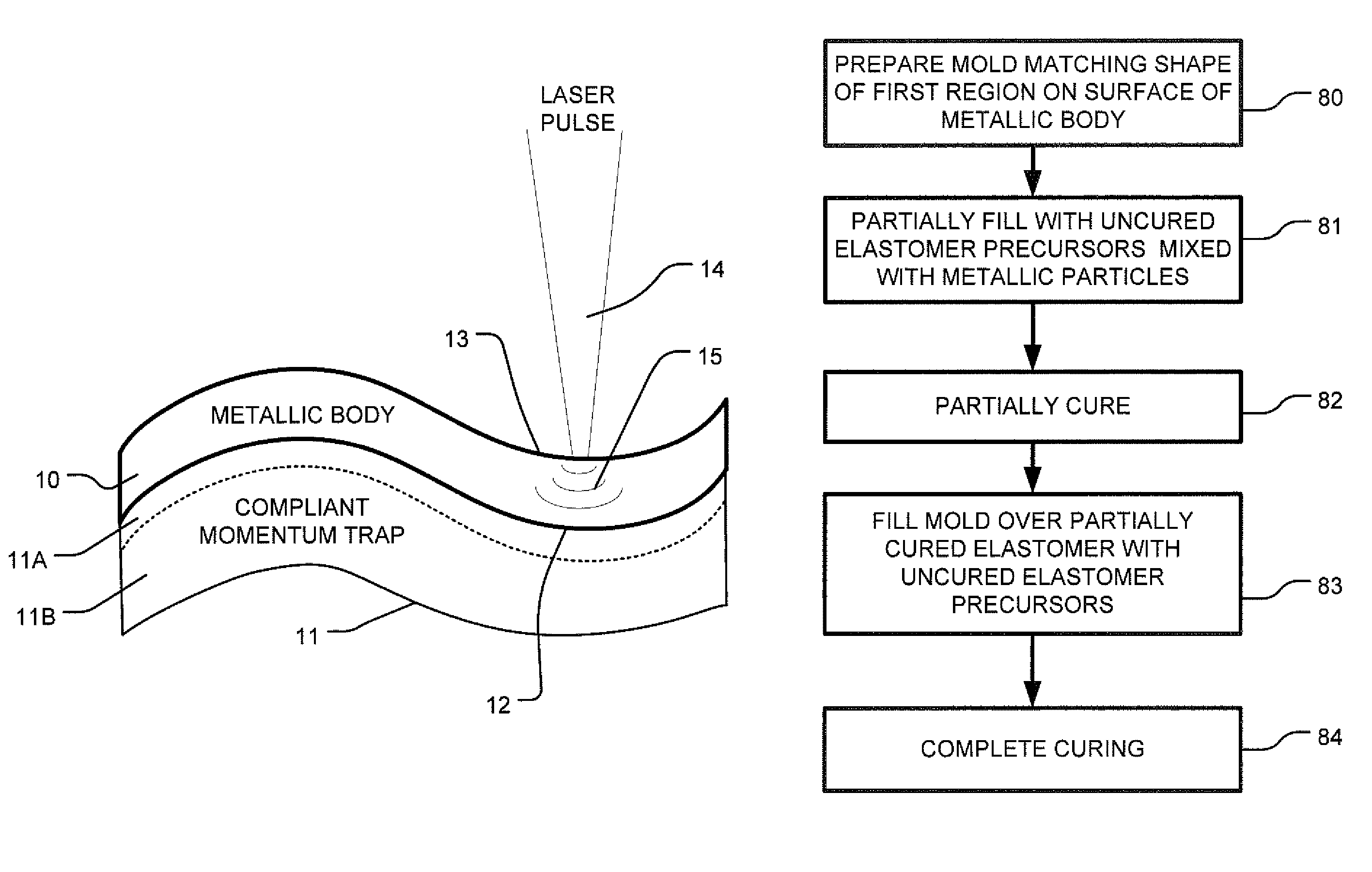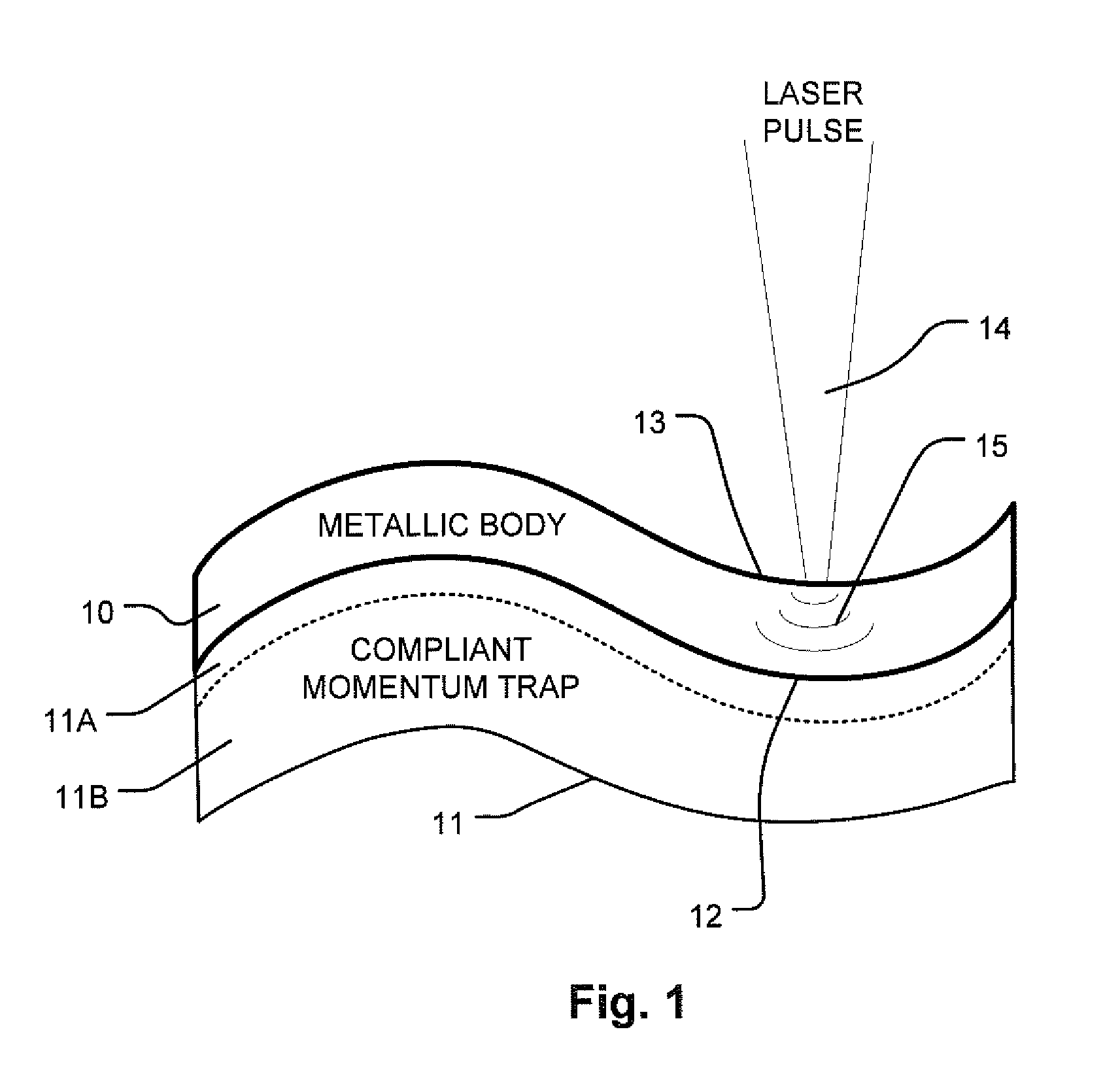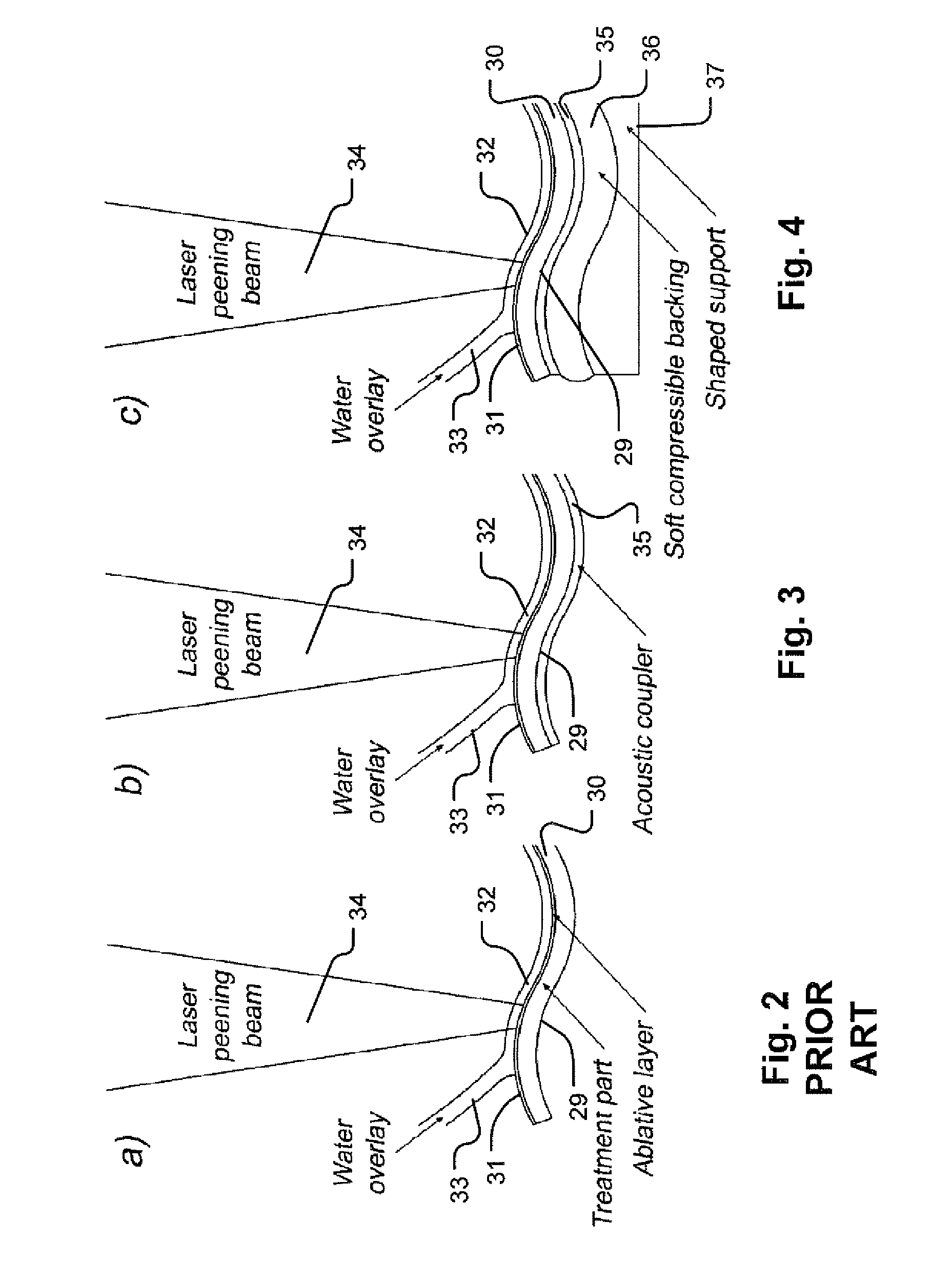Laser shock processing with momentum trap
a technology of momentum trap and laser peening, which is applied in the direction of machines/engines, manufacturing tools, liquid fuel engines, etc., can solve the problems of inability to use, inability to provide sufficiently intense or deep treatment of laser peening, and inability to reverse the reflected wave, so as to achieve different modulus of elasticity, prevent additional reflection, and attenuate the reflected tensile and compressive wave
- Summary
- Abstract
- Description
- Claims
- Application Information
AI Technical Summary
Benefits of technology
Problems solved by technology
Method used
Image
Examples
Embodiment Construction
[0030]A detailed description of embodiments of the present invention is provided with reference to the FIGS. 1-11.
[0031]Laser peening is applied to devices that comprise metallic bodies that can have complex shapes. For example, turbine blades for jet engines have curved air foil shapes with bases that also have complex shapes. A compliant elastomer momentum trap is described which can be used with metallic bodies having complex shapes. An elastomer is an elastic rubber-like or rubber-based substance (as a synthetic rubber or a plastic having some of the physical properties of natural rubber). Representative elastomers which can be used for a momentum trap as described herein include silicones, urethanes, and ethyl propylene diene monomers EPDMs. The use of a compliant elastomer is of great advantage since it can readily conform to complex surface shapes. Since it is a solid, it can also be fashioned in any desired thickness, without the constraints associated with flowing liquids. ...
PUM
| Property | Measurement | Unit |
|---|---|---|
| thickness | aaaaa | aaaaa |
| densities | aaaaa | aaaaa |
| density | aaaaa | aaaaa |
Abstract
Description
Claims
Application Information
 Login to View More
Login to View More - R&D
- Intellectual Property
- Life Sciences
- Materials
- Tech Scout
- Unparalleled Data Quality
- Higher Quality Content
- 60% Fewer Hallucinations
Browse by: Latest US Patents, China's latest patents, Technical Efficacy Thesaurus, Application Domain, Technology Topic, Popular Technical Reports.
© 2025 PatSnap. All rights reserved.Legal|Privacy policy|Modern Slavery Act Transparency Statement|Sitemap|About US| Contact US: help@patsnap.com



